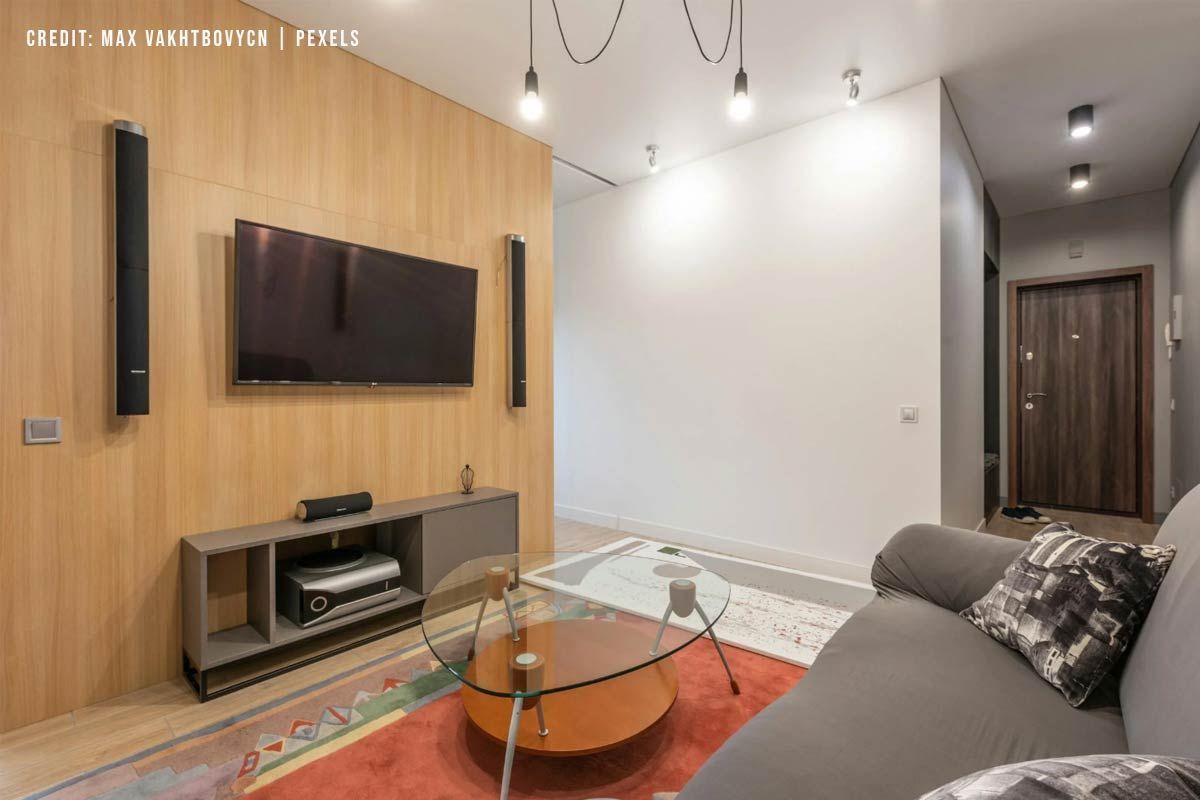Imagine sinking into your favourite armchair, the lights dimming just so, and being completely enveloped by crystal-clear sound and a breathtakingly vibrant picture. This isn’t just watching TV—it’s an
experience.
Creating a premium home theatre system in your own home might sound daunting, but with a little guidance, it’s an achievable and incredibly rewarding project. This guide will walk you through the essential components and considerations, empowering you to build a setup that will transform your entertainment.
Laying the Foundation: The Display
The centrepiece of any home theatre is undoubtedly the display. This is where the magic happens visually, drawing you into the world of the movie, the intensity of the game, or the spectacle of the concert. You have two primary options to consider: a television or a projector and screen.
Televisions: Brightness and Simplicity
Modern televisions have reached incredible levels of picture quality. OLED (Organic Light Emitting Diode) TVs offer inky blacks and vibrant colours with exceptional contrast, creating a truly immersive image. QLED (Quantum Dot LED) TVs deliver impressive brightness and a wide colour gamut, making them excellent choices for rooms with more ambient light.
When choosing a TV, size matters, but so does viewing distance. A general rule of thumb is that for the most immersive experience, your viewing distance (in inches) should be roughly 1.5 to 2.5 times the diagonal screen size.
Consider the layout of your room and where your seating will be positioned to determine the ideal screen size. Features like 4K resolution (and increasingly, 8K for future-proofing), High Dynamic Range (HDR) support (Dolby Vision and HDR10+ are popular formats), and a high refresh rate (especially for gaming) are crucial for a premium experience.
Projectors and Screens: The Cinematic Scale
For a truly cinematic feel, nothing beats a projector and screen. Projectors can deliver massive screen sizes that dwarf even the largest TVs, creating a truly immersive and theatrical experience. There are various types of projectors, including DLP (Digital Light Processing) and LCD (Liquid Crystal Display), each with its own strengths and weaknesses in terms of contrast, brightness, and colour accuracy.
Choosing the right screen is just as important as selecting the projector. Different screen materials and gain levels are designed to optimize the projected image based on room lighting and projector brightness.
Consider the aspect ratio of your screen as well; a 16:9 widescreen format is ideal for most movies and TV shows. While installation might be slightly more involved than setting up a TV, the sheer scale and impact of a projected image can be breathtaking.
Immersive Sound: The Audio Experience
A stunning picture is only half the battle. To truly transport you into the heart of the action, a high-quality audio system is essential. Surround sound setups create a three-dimensional soundscape that makes you feel like you're right there in the middle of the scene.
AV Receivers: The Command Center
The heart of your audio system is the Audio/Video (AV) receiver. This component acts as the central hub, connecting all your audio and video sources (Blu-ray player, streaming devices, game consoles) and powering your speakers.
A good AV receiver will offer multiple HDMI inputs and outputs, support for various surround sound formats (like Dolby Atmos and DTS:X for immersive height effects), and sufficient power to drive your chosen speakers effectively. Look for features like room correction software, which analyzes your room’s acoustics and calibrates the audio output for optimal sound quality.
Speakers: The Voices of Your Entertainment
The speakers are what bring the audio to life. A typical surround sound setup includes:
- Front left and right speakers. These deliver the main stereo soundstage and most of the dialogue and music.
- Center channel speaker. Crucial for clear and focused dialogue, anchoring the voices to the screen.
- Surround speakers (side or rear). These create the immersive surround effects, placing you within the environment of the movie or game.
- Subwoofer. Responsible for the low-frequency effects (bass), adding impact and rumble to explosions and deep musical notes.
Consider your room size and listening preferences when choosing speakers. Bookshelf speakers are a great option for smaller rooms, while floor-standing speakers can deliver more powerful sound in larger spaces. The quality of your speakers will significantly impact the overall audio experience.
Connecting It All: Cables and Interconnects
Don't underestimate the importance of good quality cables. While expensive, audiophile-grade cables might offer marginal improvements, ensuring you have reliable, high-bandwidth HDMI cables is crucial for transmitting 4K and HDR signals without issues. Optical or coaxial cables are used for digital audio connections. Proper cable management will also keep your setup looking clean and organized.
The Smart Side: Source Devices and Control
Your home theatre needs content! This comes from various source devices:
- Blu-ray players. For high-quality physical media playback.
- Streaming devices (e.g., Apple TV, Roku, Amazon Fire TV). Providing access to a vast library of streaming services.
- Gaming consoles. Offering interactive entertainment and often serving as Blu-ray players and streaming devices as well.
- Cable/satellite boxes. For traditional television viewing.
Consider a universal remote control or a smart home hub to simplify controlling all these devices. This can make navigating your entertainment system much more user-friendly.
The Environment: Room Considerations
The room itself plays a significant role in the overall home theatre experience. Consider these factors:
- Lighting. The ability to control light is crucial for optimal viewing. Blackout curtains or blinds can eliminate unwanted ambient light, enhancing contrast and picture quality.
- Acoustics. Hard surfaces can cause sound reflections that muddy the audio. Consider adding soft furnishings like rugs, curtains, and acoustic panels to absorb sound and improve clarity.
- Seating. Comfortable seating is essential for long viewing sessions. Consider dedicated home theatre seating or comfortable couches and recliners.
- Ventilation. Electronic equipment generates heat, so ensure adequate ventilation to prevent overheating.
Budgeting and Planning: Making it Happen
Building a premium home theatre system is an investment. It’s wise to set a budget early on and prioritize components based on your needs and preferences. You don't have to buy everything at once; you can build your system incrementally, starting with the most crucial elements (display and basic audio) and adding more components over time.
Sometimes, unexpected needs arise during such projects. For instance, if you’re in need of a bit of financial flexibility to complete your setup, exploring options like our
instant online payday loans in Ontario could provide a short-term solution.
When you need a
fast loan online to bridge a gap, ensure you choose a reputable provider like us at Lamina Brokers.
Installation and Calibration: The Finishing Touches
Once you have your components, proper installation and calibration are key to maximizing performance. Follow the manufacturer’s instructions for setting up each device.
Enjoying Your Creation: The Ultimate Reward
Building a premium home theatre system is a journey, but the destination is well worth the effort. Once everything is set up and calibrated, you’ll have a dedicated space for immersive entertainment that rivals the best cinemas.
Whether you’re hosting movie nights with friends, diving deep into your favourite video games, or simply enjoying a relaxing evening of streaming your favourite shows, your home theatre will provide countless hours of enjoyment.








